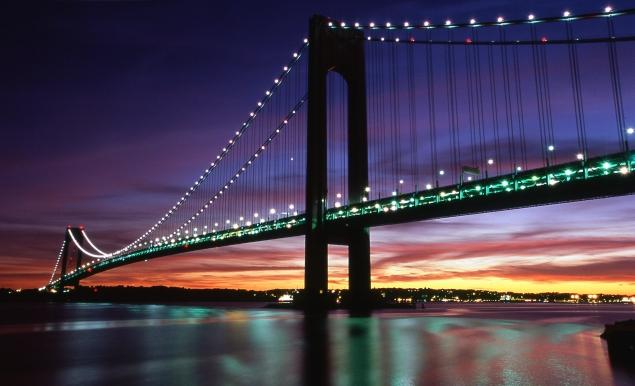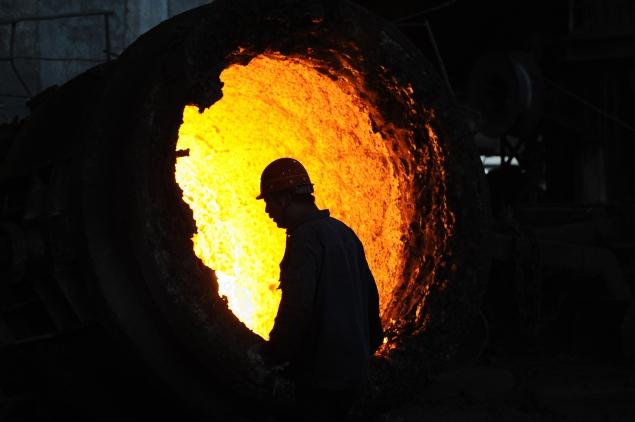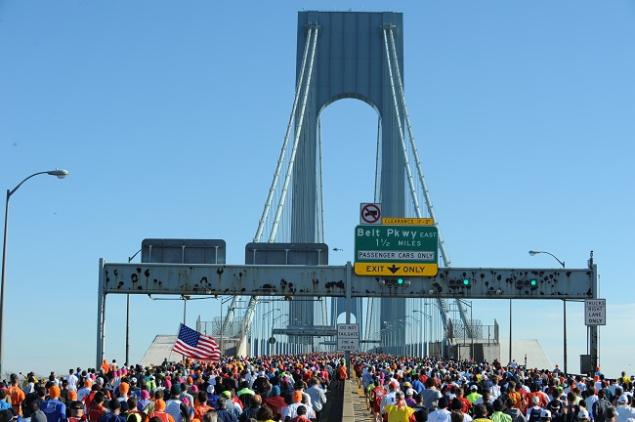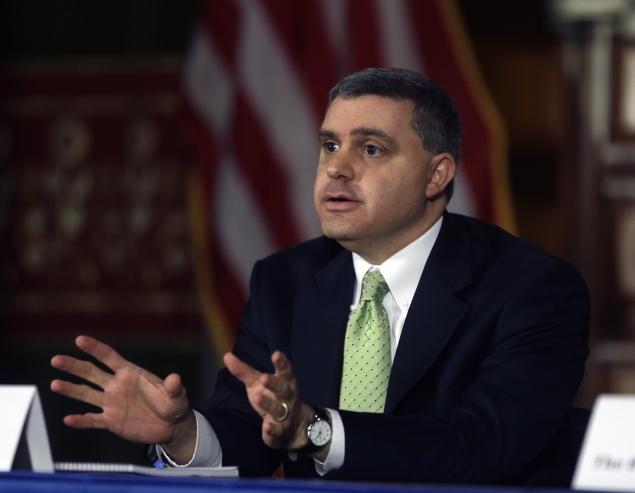MTA Outsources $235M Verrazano Bridge Project to China
The agency says it could not find an American company capable of making the high-tech steel plates it wants, but critics say the decision came down to cheaper labor.
Add Staten Island’s Verrazano Bridge to the list of U.S. icons that are made in China.
The Metropolitan Transportation Authority outsourced a $235 million renovation project to China for work on the statuesque steel span — over the protests of hard-up American steelworkers who say they could do the job.
“It’s a kick in the teeth. There’s a lot of New Yorkers who would be thrilled to work on this project. It should be American made,” United Steelworkers’ Vice President Tom Conway said.
The union has reached out to New York’s AFL-CIO to mobilize support among other labor organizations, the Daily News has learned.
“Our state has lost nearly half its manufacturing capacity in the past 20 years,” AFL-CIO head Mario Cilento said in a letter sent July 1 to its executive council.
The Metropolitan Transportation Authority outsourced a $235 million renovation project to China for work on the statuesque steel span — over the protests of hard-up American steelworkers who say they could do the job.
“It’s a kick in the teeth. There’s a lot of New Yorkers who would be thrilled to work on this project. It should be American made,” United Steelworkers’ Vice President Tom Conway said.
The union has reached out to New York’s AFL-CIO to mobilize support among other labor organizations, the Daily News has learned.
“Our state has lost nearly half its manufacturing capacity in the past 20 years,” AFL-CIO head Mario Cilento said in a letter sent July 1 to its executive council.
“Irresponsible actions by public agencies like the MTA will only make things worse,” Cilento wrote, asking members to “stand by” as they prepare to fight the MTA’s outsourced contract.
According to the MTA, there’s not a steel plant in America that can produce the type of high-tech steel plate it wants — known as orthotropic design.
“(The agency) worked diligently to find an American steel manufacturer with the capability, experience and desire to fabricate the steel bridge deck … the MTA could not find an American fabricator,” the agency said in a statement defending its decision.
Orthotropic design is rarely used in America because the bulk of U.S. bridges were built before the technology existed.
The MTA hopes to extend the Verrazano’s lifespan by replacing its heavy concrete upper deck with lighter, stiffer orthotropic plates. Similar work was done two years ago on another U.S. span, the San Francisco-Oakland Bay Bridge.
According to the MTA, there’s not a steel plant in America that can produce the type of high-tech steel plate it wants — known as orthotropic design.
“(The agency) worked diligently to find an American steel manufacturer with the capability, experience and desire to fabricate the steel bridge deck … the MTA could not find an American fabricator,” the agency said in a statement defending its decision.
Orthotropic design is rarely used in America because the bulk of U.S. bridges were built before the technology existed.
The MTA hopes to extend the Verrazano’s lifespan by replacing its heavy concrete upper deck with lighter, stiffer orthotropic plates. Similar work was done two years ago on another U.S. span, the San Francisco-Oakland Bay Bridge.
The Verrazano, a double-decked suspension bridge — which opened in 1969 after 10 years of construction — was built by American steel and iron workers, Conway noted.
“We were good enough then, but now all that work will go to China, to a government-owned company,” the union veep said.
“Maybe we’ll get some work tying up the barges” that haul the steel from China, he added bitterly.
The MTA said it will have strict quality-control tests to make sure the Chinese steel meets U.S. safety guidelines and requirements. Production has already started, the agency said.
Once the finished Chinese-made steel plates are shipped back, American workers will reassemble the Verrazano’s upper deck.
“We were good enough then, but now all that work will go to China, to a government-owned company,” the union veep said.
“Maybe we’ll get some work tying up the barges” that haul the steel from China, he added bitterly.
The MTA said it will have strict quality-control tests to make sure the Chinese steel meets U.S. safety guidelines and requirements. Production has already started, the agency said.
Once the finished Chinese-made steel plates are shipped back, American workers will reassemble the Verrazano’s upper deck.
“We are very skeptical about their claim they can’t find an American plant to make these plates. We found two in Pennsylvania — 100 miles from the bridge — that bid on the project and wanted to do it,” said Conway.
The real issue is money, he said.
“This job here is about $30 an hour. In China, the workers will get anywhere from $10 to $15 a day,” he said.
It would cost another $100 million to keep the project in America, the MTA said.
Cilento said the agency “should be ashamed of itself” for the blatant outsourcing.
“It is incomprehensible that the MTA would award a $235 million project to China when there are American workers ready, willing and able to perform the task,” he said.
The real issue is money, he said.
“This job here is about $30 an hour. In China, the workers will get anywhere from $10 to $15 a day,” he said.
It would cost another $100 million to keep the project in America, the MTA said.
Cilento said the agency “should be ashamed of itself” for the blatant outsourcing.
“It is incomprehensible that the MTA would award a $235 million project to China when there are American workers ready, willing and able to perform the task,” he said.
SOURCE: New York Daily News






This is a such a tragic decision. It doesn’t surprise me, however. The MTA has been making bad choices like this for years.
Shameful. Millions of Americans are out of work, and they toss even MORE money to China. Will America wake up in time?